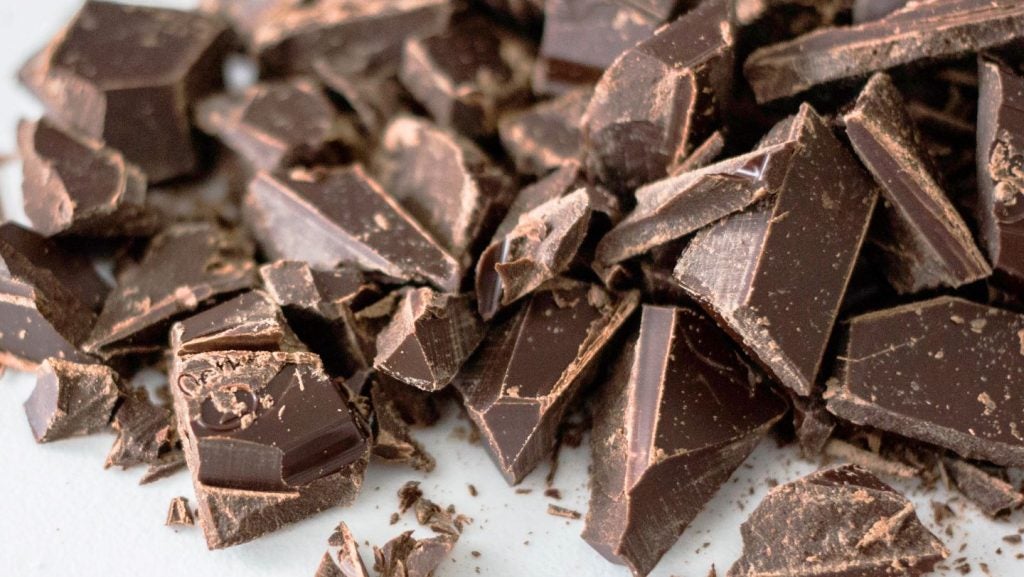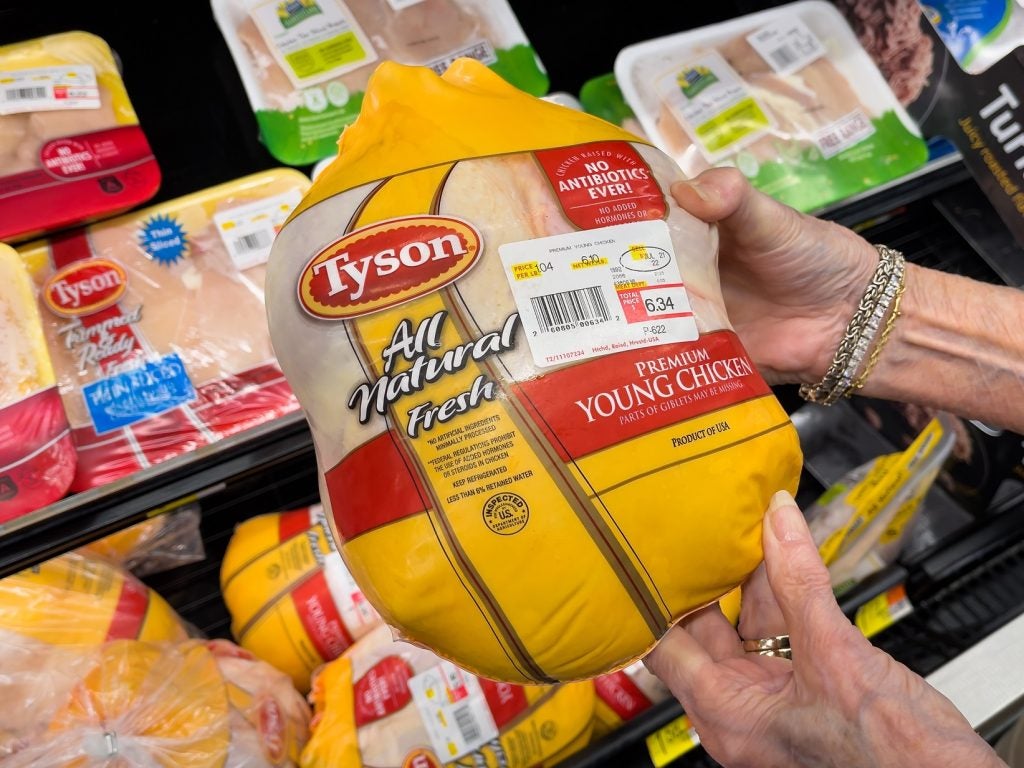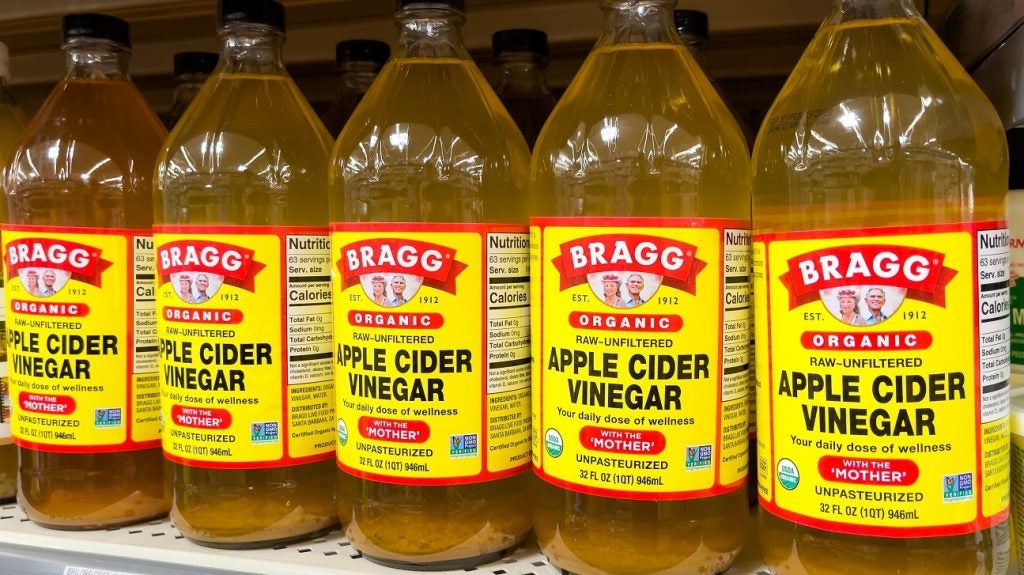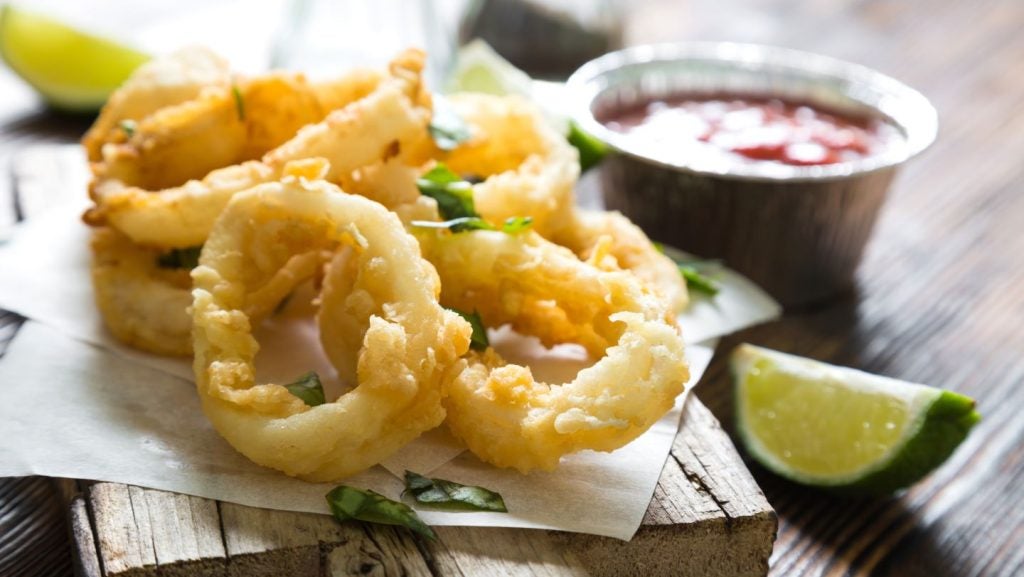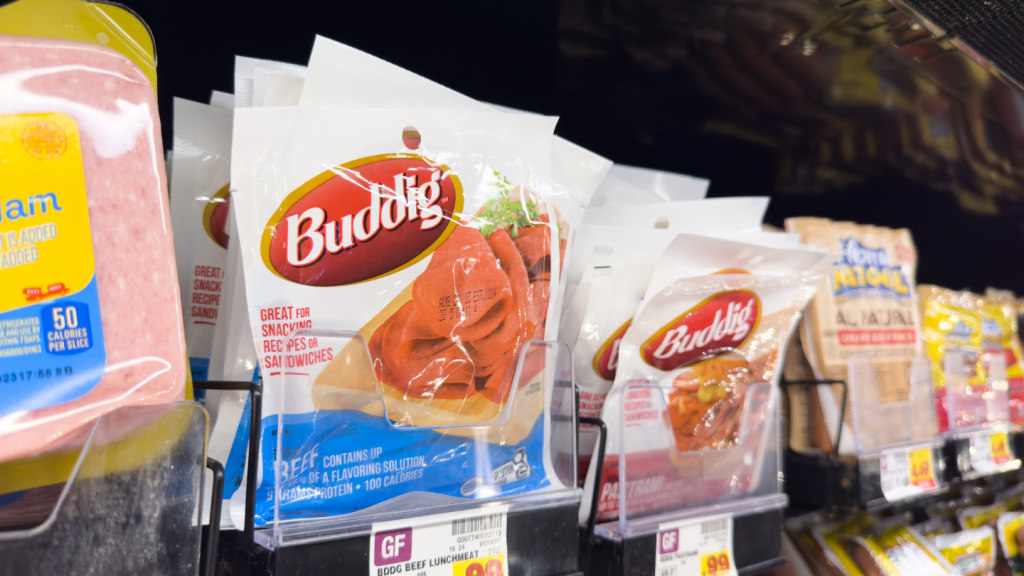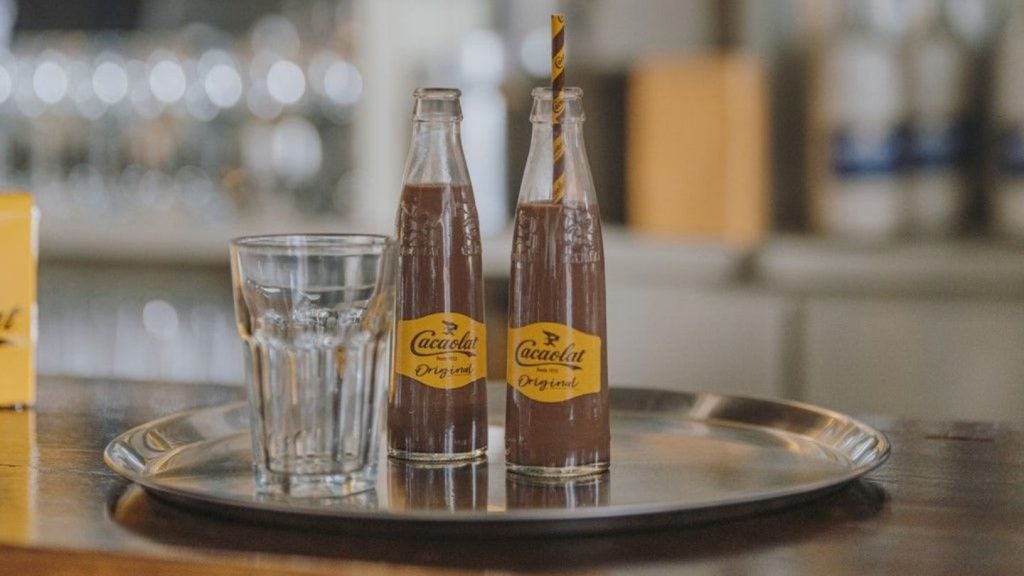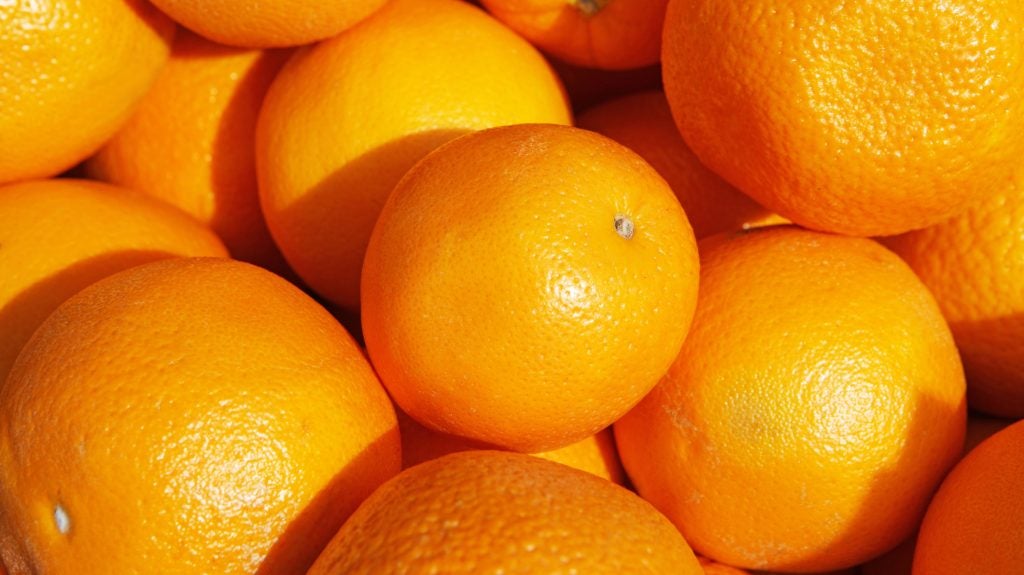Rising cocoa prices have been a major headache for the world’s chocolate producers over the past 12 months. Sky-rocketing prices were sparked by pressure in yields, primarily in Cote d’Ivoire and Ghana, which supply around 40% and 15% of the world’s cocoa beans respectively (though some in the chocolate sector have also pointed to factors "beyond supply and demand", including market speculation).
Research published this month by GlobalData, Just Food’s parent, predicts total cocoa production for the 2023-2024 period to drop 11% to 4.37m tonnes, compared to 2022-2023. As to be expected, the strongest declines are expected to be in Cote d’Ivoire and Ghana, with annual production growth slumping 20% in the former, to 1.73 tonnes, and by 27% in the latter, to 525,000 tonnes.
Reasons for the shortage of cocoa beans include tough growing conditions caused by El Niño-related droughts, as well as the black pod disease and cacao swollen chute virus that infested cacao trees in 2023.
With worsening climactic conditions likely to continue, one emerging area of innovation is cocoa-free chocolate. Though the fledgling industry is dominated by SMEs, major food producers are showing interest. Earlier this year, agri-food giant Cargill partnered up with US chocolate alternatives producer Voyage Foods to be its business-to-business distributor. The group makes its cocoa-free chocolate from a blend of RSPO certified palm and shea kernel oils, sunflower seed protein and grape seeds.
However, it remains very much early days for cocoa-free chocolate. How much work needs to be done before we can consider the products as viable alternatives to such a popular and indulgent treat loved globally?
Sense of urgency
Cocoa-free chocolate is still in its early stages but there are signs the pressure on the conventional chocolate sector is sparking interest.
As Julia Buech, a senior analyst in consumer foods at Rabobank, explains: “This interest is bound to grow further, considering major current as well as longer-term challenges within the traditional chocolate sector: soaring commodity prices, constrained supply, upcoming EU deforestation regulations.
“Investors are looking to innovative, sustainable alternatives to cocoa-based products that may help take some load (and dependency) off the cocoa supply chain.”
Moreover, developing and launching cocoa-free chocolate would provide an opportunity “to sidestep cocoa’s biggest ethical and environmental pitfalls”, Buech says. “Currently, sourcing cocoa comes at a high cost, and not just in financial terms. The environmental toll is rather alarming, with cocoa production contributing to deforestation in key growing countries such as Ivory Coast and Ghana, threatening biodiversity and exacerbating climate change.”
The industry is also rife with social problems, she says, a “legacy of poor prices paid to cocoa farmers”. The scourge of child labour is an issue the chocolate industry has been grappling with for decades.
And major chocolate manufacturers remain in the spotlight, with ongoing scrutiny of their efforts to make their supply chains more sustainable. Earlier this year, KitKat producer Nestle came under fire when new data found most cocoa farmers working under its income accelerator scheme in Cote d’Ivoire were still not receiving a wage that matched the living income.
The recent development of the cocoa-free chocolate sector has centred around companies supplying cocoa-free ingredients to food manufacturers.
UK-based Win-Win has raised around $6.7m to date for a business model anchored around supplying cocoa-free chocolate to manufacturers, while it has also developed finished products. Carob and barley are the company's two key ingredients which are transformed into a chocolate alternative through a proprietary fermentation process.
Co-founder and CEO Ahrum Pak says more investment into cocoa-free chocolate is inevitable. “We might not have a choice is what I’m saying”, she tells Just Food. “I think the supply has just dipped down by so much that we really are going to become very parsimonious with what and how we eat our chocolate”.
Removing cocoa from mainstream chocolate products isn’t necessarily going to be a hard shift for manufacturers either, with many already removing it to cut production costs. Pak says: “Companies have been historically swapping out cocoa for other things like a lot of sugar… so we are seeing decreasing amounts of cocoa in our chocolates over the last decade. It’s just something the industry has been moving towards”.
Which products?
While still at a nascent stage, most producers of cocoa-free chocolate appear to be targeting mass-market confectionery products as opposed to more ‘premium’ full-scale tablets.
As Buech explains: “Chocolate is an ingredient in many food sectors, from bakery to dairy. In some of these products, where chocolate isn’t the only ‘star’ ingredient, consumers may be more willing to accept cocoa-free alternatives – provided they deliver on taste. Of course, consumer education about the benefits of cocoa-free also plays a key role.”
Germany-based Planet A Foods is an example of a B2B company supplying cocoa-free chocolate to manufacturers in other sectors. Its ChoViva product is made by fermenting and roasting oats, sunflower seeds and plant-based fats. Mainly active in Germany and France, and in the middle of planning its entry into the UK, the group works with bakery-focused companies with ChoViva. CEO Max Marquart says: “We’ve seen a lot of success in the bakery domain, so cakes, convenience cakes, cookies, biscuits”.
For Voyage Foods CEO Adam Maxwell, alt-cocoa has the greatest potential in these types of products. “Five per cent of a chocolate chip cookie formula is a chocolate chip. [With this product], you want the experience of consumption of a chocolate chip cookie and those areas really makes sense for these products to live, not in like your $10 chocolate bar that tells the story of the farmer and the terroir and the type of beans.”
While some companies are testing the market with smaller doses of the product, this isn’t the case everywhere. Last year, Finnish chocolatier Fazer took a different approach with the trial of its Taste the Future “candy tablet” chocolate alternative, made with 10% roasted malted rye. The pilot in Finland and Sweden was supposed to last for several months but the batch was sold out within a week of launching, Fazer says.
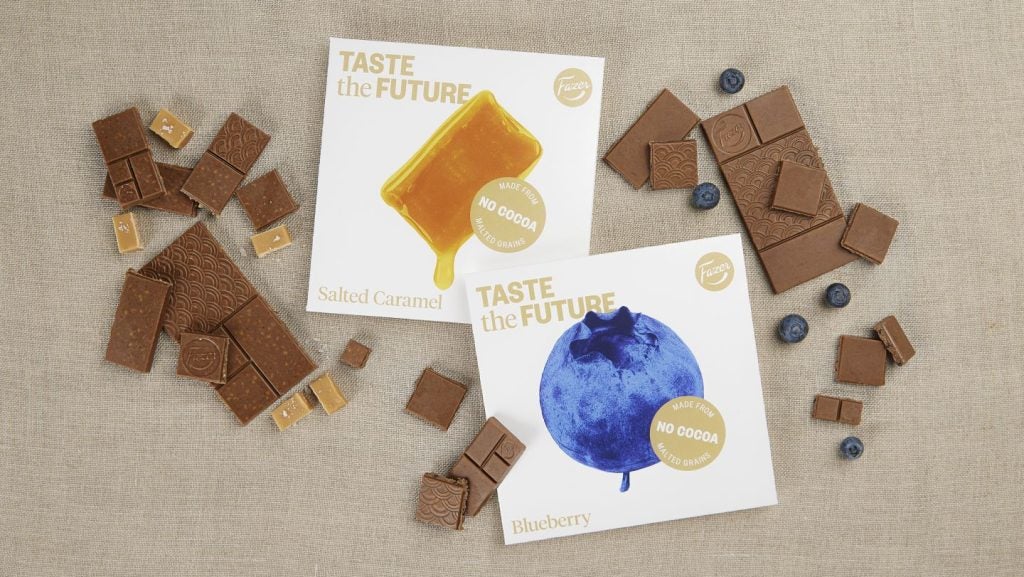
Price parity and scaling up
As with any novel product on the market, a key factor to getting it to a mass-market level is affordability.
Win-Win’s product is affordable, says Pak, but it’s not the case across the board. “It really depends on what kind of technology you're using to grow and produce your alternatives," she says.
“For us, we're at price parity and the reason for that is because we don't use synthetic biology or genetically modified organisms, we don't have the regulatory hurdles, we don't need specialised equipment, so we can kind of piggyback off what is already out there in terms of manufacturing, setup, etc.”
For Fazer, affordability is the top priority but this doesn’t mean non-cocoa products could be exempt from their more upmarket chocolate segments. As Annika Porr, senior manager at Fazer’s Forward Lab says: “Maybe in the future, we need to consider under what kind of brand this kind of product could be… of course, we have several brands and some of them are more exclusive, some of them less [so]… But it should be affordable to anyone.”
According to analysts, one of the top challenges to the development of the cocoa-free chocolate industry is accelerating production and partnerships with larger companies are essential.
As Hannah Cleland, senior consumer analyst at GlobalData explains says: “While there are a number of beans, pulses, and grains which can be used to replace cocoa, the main hurdle has been to scale-up production.
“It is likely that, as has happened with many other alternative foods, cocoa-free chocolate’s path to market will be through larger firms such as Cargill funding the work of food tech start-ups.”
While Voyage Foods works with Cargill, Planet A Foods has teamed up with German retailer Rewe, as well as manufacturers Peter Kölln and Lindt & Sprüngli. Win-Win works with sweet pastry and desserts producer Martin Braun, a subsidiary of the Oetker Group.
“[From] day zero, we always realised the way we can have the most impact to the most people is to not compete… the largest food manufacturing companies in the world, but to help the large multinationals and foods are looking for more price-stable, cost-effective, and sustainable alternatives," Maxwell says. "And so our thought was, help not compete, because we're not going to win in that game.”
Cracking the taste
While it may seem that cocoa-free chocolate alternatives are emerging for the first time, the idea isn’t brand new to the market. “In the mid to late 20th century some consumers will remember chocolate-alternative products made from carob beans, which are a common plant grown in the Mediterranean," GlobalData's Cleland says. "Carob failed to take off as many consumers felt the taste was lacking compared to cocoa.”
Unsurprisingly, a survey carried out in the first quarter of the year by GlobalData shows taste was the most common reason consumers would be put off from trying alternatives to chocolate, confectionery and desserts.
While R&D has come on leaps and bounds since the 1970s, delivering a flavour consumers will return to is no simple feat. “Brands must better manage consumer expectation of alternative products,” Cleland adds. “The flavor of carob for instance is not inherently ‘bad’ but when consumers were expecting it to taste exactly like cocoa chocolate it was off-putting.”
If you fulfil on taste and on a price, I think the consumer is quite open to change
Max Marquart, Planet A Foods
In contrast to other alternatives on the market, chocolate is a more complex product to crack, given its long list of applications. “The chocolate that is used as a coating on an ice cream is wildly different than a baking chip in a chocolate chip cookie,” says Maxwell, “and so getting the level of specificity on taste, getting the level of specificity on performance, and then also in the giant range of different chocolate applications is very different than a plant-based milk because milk is milk, right? There's not that much variety in flavour… variability in rheology, crystallisation, particle size, etc. but chocolate’s a very wide range of products.”
As producers continue to develop their products for a variety of confectionery formats, they should “learn from the marketing failures of carob (and more recently meat substitutes) to be upfront about the ingredients and flavors to avoid disappointing consumers”, Cleland adds.
While it’s a challenge, if consumers are going to include cocoa-free chocolate products (or products containing cocoa-free chocolate) in their shopping baskets, producers must hit the nail on the head with taste, says Marquart at Planet A Foods. He explains: “Ninety per cent of our customers tell me that the taste must be there and be [the right] price. If you fulfil on taste and on a price, I think the consumer is quite open to change.”

Sustainability hurdles
The key marketing message for cocoa-free chocolate is the product is a more sustainable option than conventional cocoa. However, a challenge faced by some smaller businesses working with larger companies is they cannot control every ingredient that goes into the product, meaning some less environmentally friendly ones may accompany their cocoa-free chocolate in product recipes.
Several bakery goods on the market made with Planet A Foods’ ChoViva contain non-certified palm oil, one of the most contentious ingredients in the food industry when it comes to sustainability. It’s a topic Marquart says he has been questioned on multiple times but he adds: “You have to also admit that the industry that we're working in is a very price-sensitive industry. If you talk about… palm oil, [it] is the cheapest or most cost-efficient one that is available for a lot of applications. It's functionally and economically the only alternative and I would say it's up to our customers to make the product and to use the ingredients that they want to use.”
There isn’t much companies like Planet A Foods can do to shift the ingredients make-up of products made with its partners for now but it’s not out of the question. He says: “We’re also working on another on a substitute for palm oil... But one step after the other.”
Choice not replacement
A view shared unanimously by producers of cocoa-free chocolate is they have no intention to compete with the conventional cocoa industry.
For Fazer, it’s about developing a new segment in its wider chocolate business. As Heli Anttila, the company’s vice president of confectionery, explains: “We also have one of the biggest chocolate brands in Finland and the biggest one in the Nordics. We're not competing against [conventional products]. This is an alternative but [consumers] are also looking for it.”
As Pak explains, those developing cocoa-free chocolate alternatives are looking to have a positive impact on the cocoa industry. “It’s never going to go away, and you don’t want [it] to, it’s people’s livelihoods. It’s a beautiful industry when done right,” she says, stressing Win Win’s aim is to “relieve the pressures on the system”.
Though plenty of work remains to improve taste and scale production, Pak’s outlook for cocoa-free chocolate is bright. “If I'm talking alt-proteins, that innovation cycle could be five to ten years,” she says. “I feel the new generation of the fermentation technologies… we've just taken all that learning from the previous generations, and we've now made it a bit faster. For me, getting us into the mainstream hopefully will be a lot shorter as well, so I'm really hoping within the next five years.”


